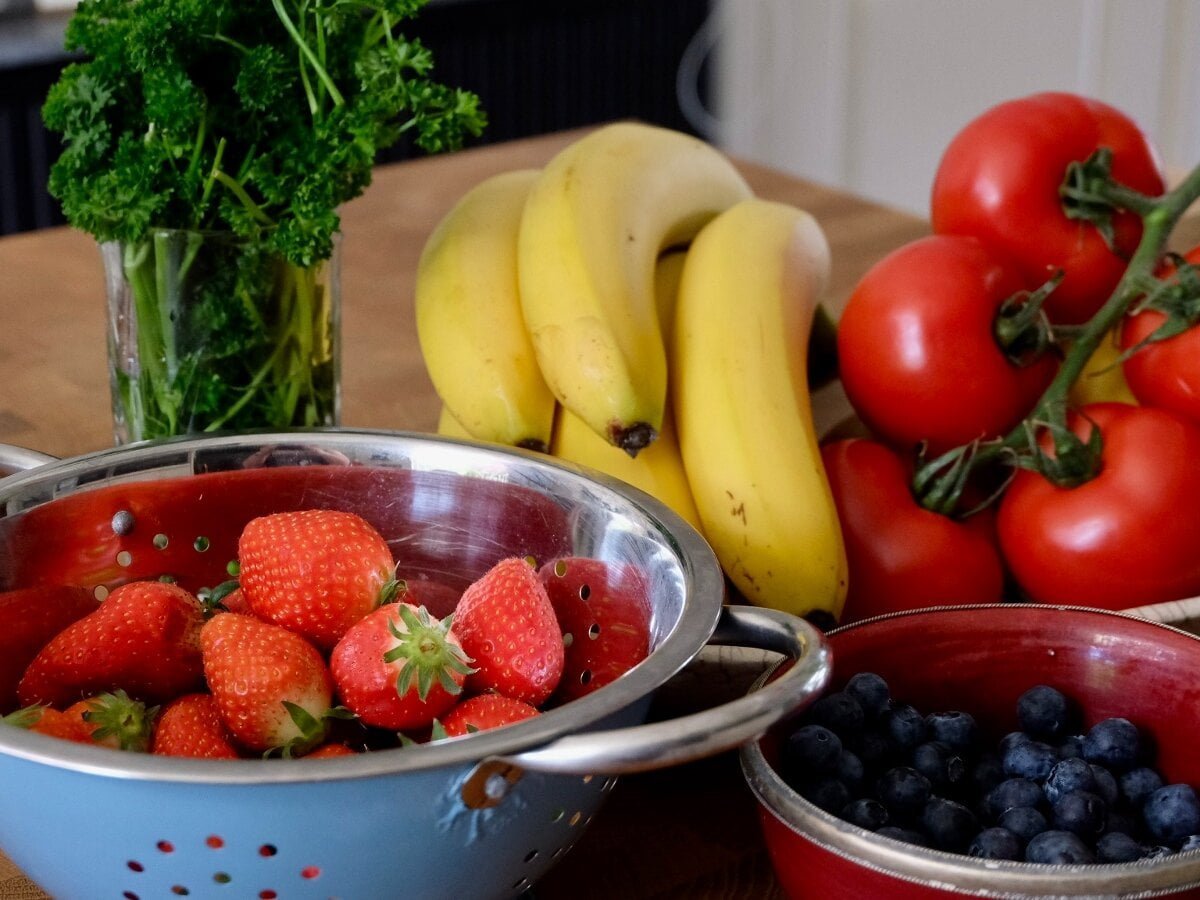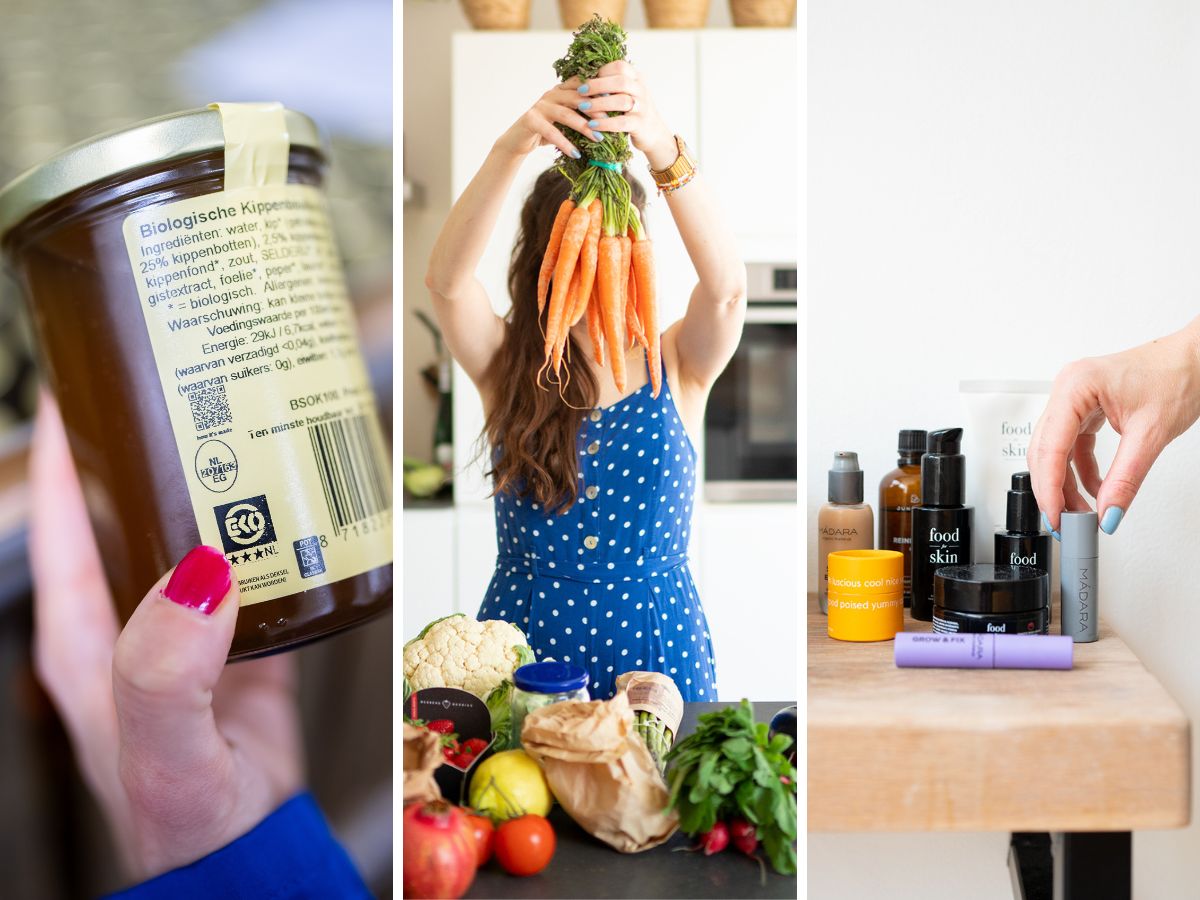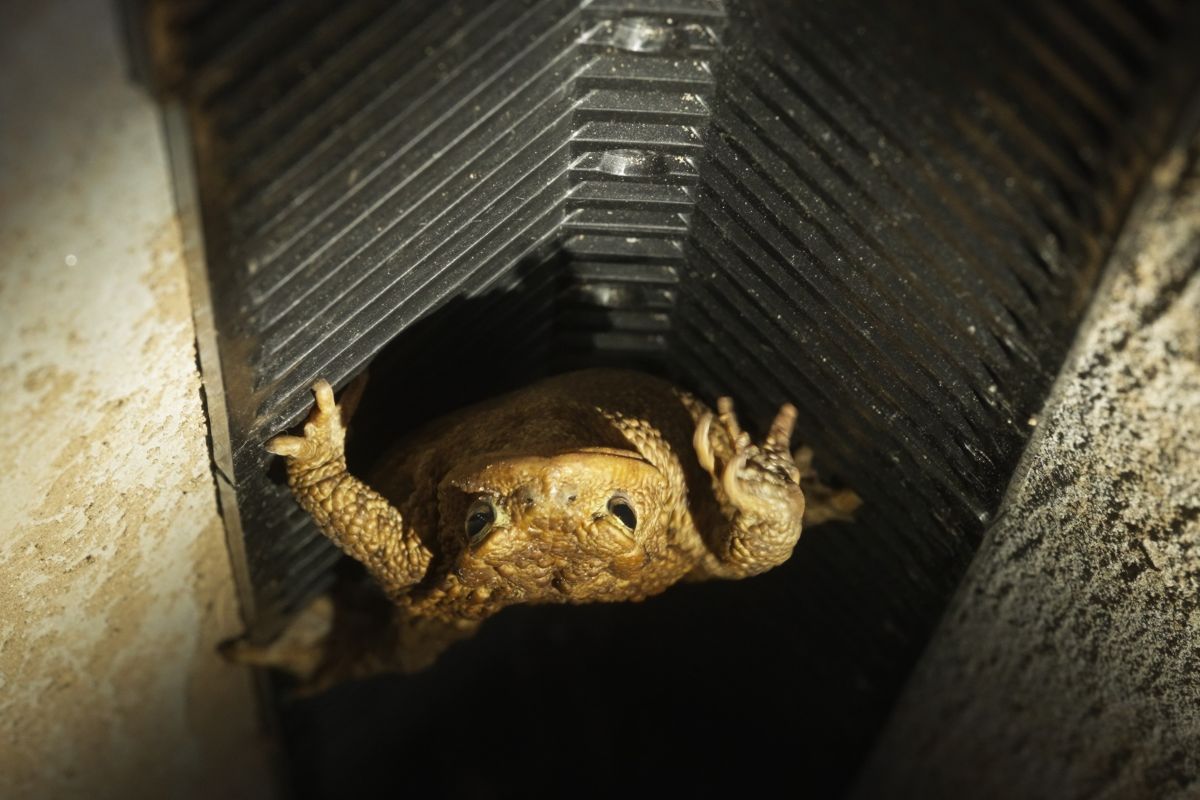How often do you still have to throw away that pathetic bag of lettuce, are you balking at that half-brown avocado in your fridge, and is the only solution for your overripe bananas baking a banana bread? Guilty... And such a waste! There are all kinds of great ways to eat sustainably, responsibly or more honestly, but of course the very simplest method is simply to waste as little as possible and enjoy what we have as much as possible! How do you do that? By storing what you have in the house smartly and in the right place. As a result, you need to throw away as little as possible! This lifehacks are super simple, but miraculously often still relatively unknown. No waste? Here's how to preserve your ingredients longer!
The smarter you store your ingredients, the longer you can keep your ingredients
Secretly, of course, we in the Netherlands are extremely spoilt when it comes to food. The choice in the supermarket is huge! As a result, many people don't realise how special that actually is. But all those products also have to be produced. Grown on land, raised in a greenhouse, produced in a factory or flown in: producing food is incredibly hard on the earth. Before our food reaches the supermarket and then our fridge, it has already travelled a long way. Some products are best used and eaten as soon as possible, while others can be stored for a while. The smarter you store your ingredients, the longer you can keep them.
Perhaps you remember your grandmother's kitchen? Chances are that there was an onion pot on the cupboard, she kept potatoes in a basket and regularly ran to the cellar to grab some other ingredients. Unfortunately, over time, we have lost a bit of knowledge about what is best to keep in which place. We have a fridge, don't we? That fridge makes things considerably easier for us in many cases, but there are other smart storage places or ways. Read along.
This is how to store your ingredients for longer: not everything needs to be in the fridge
Do you often have to throw away fruit and vegetables because they are limp or brown? Chances are you are storing your fruit and vegetables incorrectly. Although we tend to keep everything in the fridge, this is far from necessary for all our food. In fact, some products actually deteriorate faster if you store them in the fridge. But what should and should not be kept in the fridge? The rule of thumb is simple: is it in the fridge compartment in the supermarket? Then put it in the fridge at home too. Pre-cut vegetables and lettuce stay fresh and crunchy for longer if you keep them in the fridge. Tomatoes, on the other hand, stay best outside the fridge. This is because they ripen further at room temperature. This applies to many other fruits, by the way! Want to know more about the best places to store fruit and vegetables: in the fridge or outside? We wrote a very helpful article on this earlier!


Smart storage with storage containers from Mepal.
Smart storage
Besides all kinds of clever tricks to keep your ingredients fresh for longer, fine storage containers are also indispensable in a sustainable kitchen. Thus, we are at thegreenlist.nl fan of Mepal's well-sealable boxes. They are stackable, they have a see-through window, they can go in the fridge, freezer, microwave oven and dishwasher and they close perfectly. Mepal is also a very Dutch brand and BPA-free. Store leftovers, keep leftover ingredients longer or mealprep, Mepal containers are indispensable in your kitchen.
The Airtender is also a super handy kitchen gadget. It allows you to vacuum old jars and bottles again in no time. Whether it contains fresh fruit, pasta sauce, a leftover from the previous day, leftover wine or fresh orange juice. Everything stays good much longer thanks to vacuuming. We wrote an article about it earlier.
No waste: with these tips, you'll need to throw away fewer ingredients
So not everything needs to be in the fridge, some ingredients actually benefit from a dry, dark place to store and other ingredients enhance each other. Do you know the trick to ripen tomatoes faster? You can do it by putting a banana next to your tomatoes. Because bananas ethylene produce, they help tomatoes in their ripening process. This can work to your advantage, but also to your disadvantage if you want to be able to store your tomatoes for longer. So keep in mind ingredients also affect each other. A few tips:
This is how to store lettuce
Lettuce is notorious! Before you know it, you have a bag of those sad, limp lettuce leaves in the back of your fridge. Want to avoid this? Open your bag of lettuce and add a piece of kitchen paper. The paper will absorb the excess condensation that causes the lettuce to become mushy. Lettuce in your vegetable garden? Then pick the lettuce immediately before preparing it. Is your lettuce still pathetic but not yet brown? Give your leaves a boost by putting them in ice water for a while.
Mushrooms and mushrooms in a bag
The trick with the paper also works with mushrooms and cultivated mushrooms. Better not to store them in the plastic box you often buy them in in the supermarket, but put them in a paper bag or a newspaper. In the plastic container, they soon become a bit slimy and you don't want that. Have you left them for too long and they have dried out? You can rinse them for a while, then you can use them again in no time.
Storing potatoes
You can store potatoes for quite a long time if you store them dry and dark. Do you still regularly find a bag of drained potatoes in the back of your cupboard? An apple in between the potatoes helps keep them firm for longer and prevents premature sprouting. By the way, the fridge is the worst place to store potatoes. The cold makes them produce sugars which changes their flavour, plus it doesn't seem to be very good for your health.
Potatoes with small offshoots are still fine to eat if you cut them liberally. This is because these sprouts and their eyes contain the substance solanine. Although solanine is only toxic in large quantities, it is still good to be careful.
A bunch of bananas
Are quite a few bananas eaten in your household? If so, a nice no-waste tip is to save the very ‘orphan bananas’ from the supermarket. Those loners no one takes are otherwise thrown away. Sin! Are things slowing down at your house? Then keep in mind that bananas on a bunch don't brown and soften as quickly. So leave your bananas attached as long as possible to keep them longer. Do you have overripe bananas in your fruit bowl? Find out here what other goodies you can make from it.


Fresh seasonal fruits and vegetables. Want to know more about this? We list them for you every month!
Enjoy your avocados for longer
Not the most sustainable choice, but avocados are SO delicious sometimes! If you buy avocados, make sure you enjoy them extra. You can't do that if they are rock hard, but the problem with avocados often seems to be that there is no middle ground. They are either inedible or instantly browned. Often, supermarket-bought avocados need to ripen further at home. This is best done at room temperature. Are they ripe? Then put them in the fridge to stop the ripening process. Not going to eat your avocado in one go? Then leave the stone in and save the skin of the other half. By storing the avocado like this - possibly with a drop of lemon juice on top - you can keep it for a few days. You can also put your half avocado in a container with a layer of water. It will stay fresh for a few days! Does your avocado still look a bit brown? Even then it really doesn't have to go straight into the bin. Underneath that brown layer it is often still perfectly green and tasty!
This is how to store fresh herbs
With a few pots of herbs on your balcony or in your own herb garden, you make it easy on yourself: you just cut only what you need. Don't have that luxury and get your fresh herbs from the supermarket? Then store them upright in a glass of water to prevent them from going limp. Rolling them up in a wet piece of kitchen paper or cloth also works. Do you have cut leftovers? Then freeze them! Next time you use herbs, just thaw a cube or throw it in your curry/pasta or soup. In many supermarkets you can also buy a spice plant, why do these wilt so quickly? Garden expert Amanda explains in Her article on having your own herb garden explains why this happens and how to prevent it.
You can also keep celery and carrots in water to ensure they stay crunchy for longer. You can keep leftovers cut in a bowl of water.
Preserving soft summer fruits
Are they back in season? Then, with luck, you can often get a hefty bowl of that Buy delicious summer or spring fruit. Usually, eating quickly is not such a problem. Can't? Then it is smart to keep your fruit dry. You can wash strawberries and store them in a colander in the fridge. Dry them and make sure you do not stack them too high so they do not crush each other. The same goes for berries. Was there already a mouldy berry in the packaging when you bought it? Washing the berries with water and a tiny bit of vinegar will kill the moulds. You should also dry the berries well after this.
Basic tips against food waste
Want to bet that with the above tips, you already have far fewer ingredients to throw away at home? Sticking to the basic rules against food waste below will help you keep track of your stock:
- Make an eating plan and a matching shopping list, that way you won't buy anything too much.
- Weigh portions. This way you will have fewer leftovers; uncut vegetables keep better than leftovers.
- About the date? Use your senses! The THT date is a guideline. We have also written extensively about this, should you want to know more.
- 4°C is a good fridge temperature. The place in your fridge also matters. We also wrote an article on the best fridge layout.
- Store your ingredients the right way. Now you know how!


Vacuuming food with Airtender and storing avocados with foodhuggers is also a no waste tip.
No waste: here's how to keep your ingredients longer (and thus throw away less!)
Isn't it a shame to have a fridge full of ingredients that you can throw away half of after a week? Not great for your wallet, but also a terrible waste of all the effort and raw materials used to make these products. By paying extra attention to where you store your ingredients, you can make them last much longer. Moreover, you get the most out of your shopping, because although some products do not immediately deteriorate so dramatically that they are no longer edible, they do lose flavour, for example, if you do not store them properly. Bonus tip? Look to the food professionals. They adhere to FIFO by default, First in First out. That way there will never be wilted vegetables in your vegetable drawer again!
Still unsure how best to store your groceries? The Nutrition Centre has a handy storage guide where all you have to do is tap in your ingredient or product for the answer as to what is the best place to store it.
More sustainable tips from thegreenlist.nl
- Got leftovers that are hard to keep? Of course, we have smart tips for that too! These ingredients are essential in your pantry if you want to cook leftovers.
- Looking for inspiration to cook with leftovers? Take a quick look at these clever leftover dishes.
- What about plastic packaging? Read the truth about plastic packaging here.
- Environmentally friendly cleaning: a clean and fresh fridge in just a few steps.
Sources: Nutrition Centre. Photo credits: main image: Mahlee Plekker, other: thegreenlist.nl.












